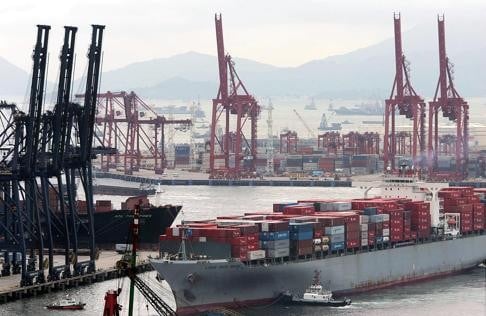Asia’s ailing tigers need to change their ageing economic model
Erik Tollefson says the conditions that saw Hong Kong, Singapore, Taiwan and South Korea return double-digit growth are gone, and they must reinvent themselves to take into account slowing export growth and older populations

With investors’ eyes fixated on the volatile Chinese economy to drive global growth in 2016, a less observed regional dynamic warrants attention. The four “Asian tigers” – Hong Kong, Singapore, South Korea and Taiwan – which burst on to the global economic scene in the 1970s and 1980s, are struggling.
Indeed, as 2016 forecasts were released, one common thread emerged: below-trend growth in the four economies that used to be key economic engines in the region. The ultimate fate of the Asian tigers will not only depend on cyclical improvements in the global economy but, perhaps more importantly, on making long-term structural changes that challenge the economic model and ageing societies that served as the foundation for their economic ascent.
Economic forecasts for the tigers are not optimistic. Singapore’s economy is slated to grow by roughly 2.2 per cent after a significant downgrade. Taiwan and South Korea have suffered a similar fate: Taiwan’s economy is forecast to grow roughly 1.9 per cent, while South Korea is slated to grow 3.1 per cent. Finally, Hong Kong’s economy is likely to grow around 2 per cent, with some investment houses forecasting that a deeper property downturn could result in even lower growth. These figures are a far cry from the double digits posted in the 1970s and 1980s, or even those registered before the financial crisis.
READ MORE: Is re-industrialisation the answer for Hong Kong?

This cyclical weakness may be further tested by the US Federal Reserve’s interest rate policy. All the tigers are arguably not moving in the same direction as the US economy and Fed policy. Sluggish growth and for some, such as South Korea, high levels of debt suggest that an accommodative monetary policy may be more likely.
As the Fed starts the cycle of rate rises, this will put additional pressure on the tigers, particularly as capital leaves markets for higher returns, as seen in Hong Kong. Although a weaker currency may help offset pressures for some, Hong Kong may suffer the most as the dollar peg essentially imports tighter monetary policy, while all other economic data points to the need for lower rates.
Long-term structural challenges also exist. Decreasing dependence on exports will mean changing the very economic model that gave rise to the tigers’ current level of prosperity. This change does not necessarily mean only shifting away from traditional manufacturing, but also moving into new sectors that require investment in research and development, and education.